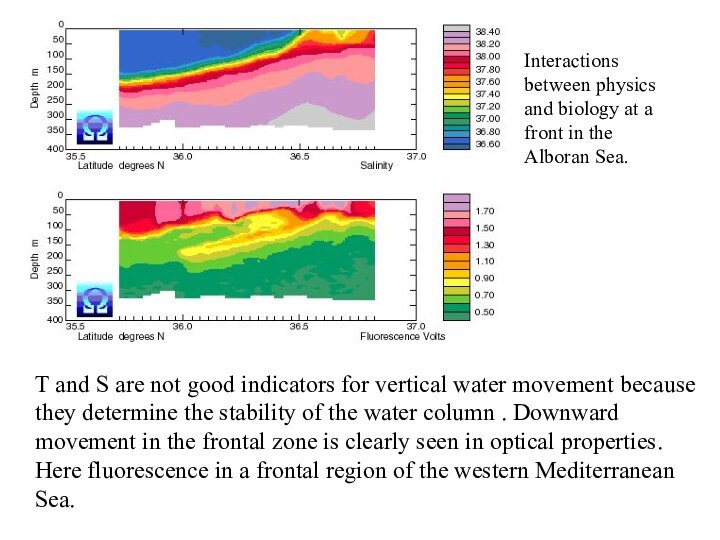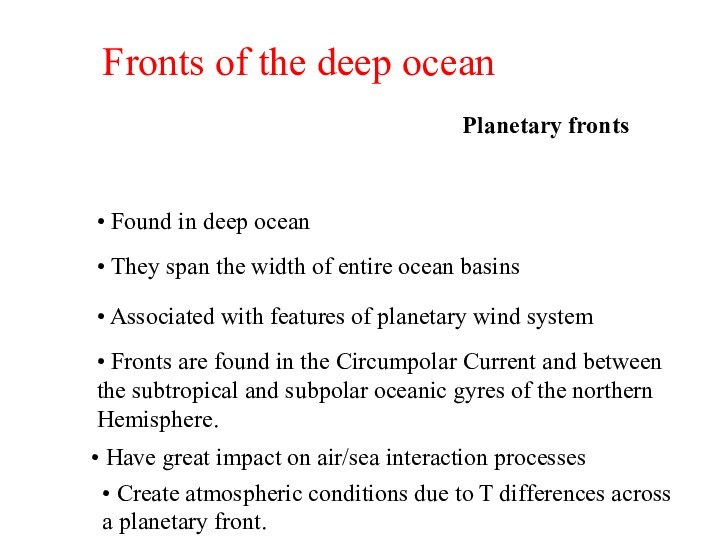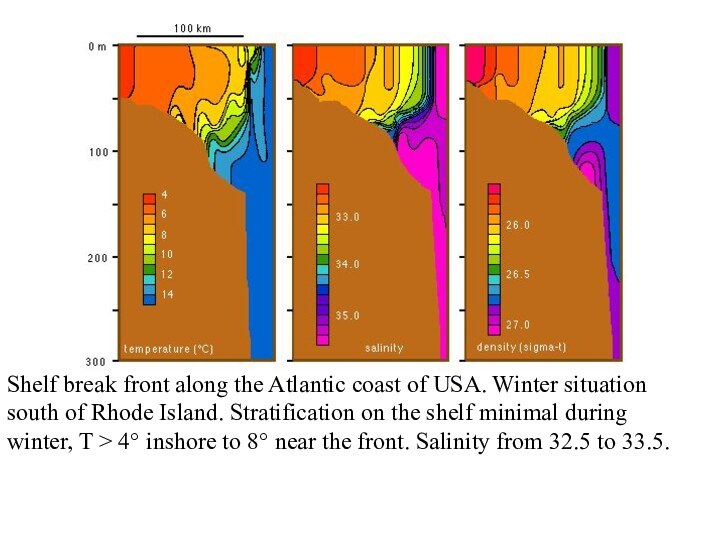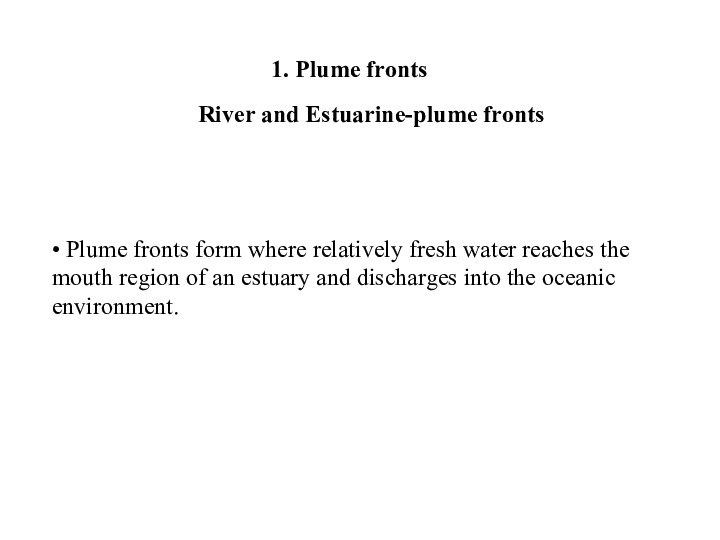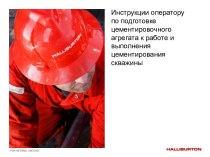regions where properties change markedly over a relatively short
distance.Another way of expressing this is that fronts are regions where the horizontal gradient of a property goes through a maximum.
Six types of fronts are usually distinguished in oceanography.
Three of these are found in the coastal ocean.
Two of these are found in estuaries.
The sixth type of front is restricted to the deep ocean.




